Introduction
Zeiss already make a range of manual focus lenses for Canon and Nikon, but this new model is the first in a new range of high-end Otus lenses from the maker optimized for the next generation of full-frame high-resolution DSLRs. As with the Touits, the new naming of the series follows the maker’s liking for adopting scientific names of birds for their lenses.
Unlike those earlier lenses designed for mirrorless cameras, this fast standard is a retrofocus full-frame (35mm format) model, but the 55mm focal length also works well on APS-C cameras, where it has a field of view equivalent to that of a 85mm.
The Otus 1,4/55 adopts the firm’s Distagon-type optical design usually reserved for wide-angle models but it’s used here in elongated form to reduce aberrations, especially field curvature, across the frame at the maximum aperture. In addition it’s a manual focus design with automatic aperture coupling and CPU contacts.
The Nikon mount (ZF.2) version also retains a manual aperture collar and provides backwards compatibility with older Nikon SLRs as well as being a useful option for filmmakers.
At $3,999 and weighing 970g for the Nikon mount version, this large lens has a 77mm filter thread and measures 83mm at its widest and 141mm in length. The new Otus is available for pre-order in Nikon and Canon mount only.
As a full-frame model, the new Carl Zeiss Otus 1,4/55, mounted on the Nikon D800, is categorically the highest performing standard-type prime in our database. When tested, it achieved the highest DxOMark score we’ve yet seen of 45 points and it attained a record Sharpness score of 29P-Mpix (out of a theoretical maximum of 36P-Mpix on the Nikon D800), prompting us to speculate that the Otus would achieve 30+ P-Mpix with the D800E.
Best standard prime:
 |
 |
 |
 |
| Carl Zeiss Distagon T* Otus 1.4/55 ZF.2 Nikon | 3999 | 45 | 29 |
| Nikon AF Nikkor 50mm f/1.4D | 329 | 32 | 16 |
| Nikon AF-S Nikkor 50mm f/1.4G | 448 | 32 | 16 |
| Sigma 50mm F1.4 EX DG HSM Nikon | 499 | 32 | 16 |
| Carl Zeiss Makro-Planar T 50mm f/2 ZF2 Nikon | 1280 | 31 | 17 |
| Nikon AF-S NIKKOR 50mm f/1.8G | 219 | 31 | 16 |
| Nikon AF Nikkor 50mm f/1.8D | 134 | 29 | 17 |
| Nikon AF Micro-Nikkor 60mm f/2.8D | 460 | 28 | 18 |
| Nikon AF-S Nikkor 58mm f/1.4G | 1700 | 28 | 18 |
| Carl Zeiss Planar T 50mm f/1.4 ZF2 Nikon | 725 | 26 | 13 |
Best prime:
 |
 |
 |
 |
| Carl Zeiss Distagon T* Otus 1.4/55 ZF.2 Nikon | 3999 | 45 | 29 |
| Nikon AF-S Nikkor 85mm f/1.4G | 2199 | 40 | 22 |
| Nikon AF-S NIKKOR 85mm f/1.8G | 690 | 40 | 19 |
| Sigma 35mm F1.4 DG HSM A Nikon | 899 | 39 | 23 |
| Nikon AF-S Nikkor 200mm f/2G ED VR II | 5899 | 39 | 28 |
| Carl Zeiss Makro-Planar T 100mm f/2 ZF2 Nikon | 1840 | 36 | 17 |
| Samyang 85mm f/1.4 Aspherique IF Nikon | 328 | 36 | 17 |
| Sigma 85mm F1.4 EX DG HSM Nikon | 969 | 35 | 18 |
| Nikon AF-S Nikkor 400mm F2.8G ED VR | 8999 | 35 | 25 |
| Nikon AF-S Nikkor 24mm f/1.4G ED | 2200 | 34 | 17 |
| Samyang 35mm F1.4 AS UMC Nikon | 599 | 34 | 15 |
| Carl Zeiss Distagon T 35mm f/1.4 ZF2 Nikon | 1843 | 34 | 17 |
| Carl Zeiss Distagon T 25mm f/2 ZF.2 Nikon | 1700 | 34 | 22 |
| Nikon AF-S NIKKOR 300mm f/2.8G ED VR II | 5900 | 34 | 24 |
| Nikon AF-S NIKKOR 28mm f/1.8G | 699 | 33 | 21 |
| Nikon AF Nikkor 85mm f/1.4D IF | 1230 | 33 | 16 |
| Carl Zeiss Distagon T 35mm f/2 ZF2 Nikon | 1005 | 33 | 17 |
| Nikon AF-S NIKKOR 35mm f/1.4G | 1797 | 33 | 17 |
| Nikon AF Nikkor 50mm f/1.4D | 329 | 32 | 16 |
| Nikon AF-S Nikkor 50mm f/1.4G | 448 | 32 | 16 |
When comparing the new Otus with the previous best performing fixed focal length lens in our database, the latest version of Nikon’s specialized high-speed portrait lens, the AF-S Nikkor 85mm f1.4G the Zeiss easily out-performs it. However, it’s also close to twice the price and a serious investment. Fortunately, it will serve double duty on a Nikon DX format DSLR with the equivalent field of view to a 85mm.
Best DxO Mark score ever measured:
The Carl Zeiss Otus 1,4/55 has the highest optical quality of any retrofocus 35mm format design to be assessed by the labs at DxOMark.
Highest sharpness score ever measured:
Prior to the new Otus, the lens with the highest sharpness score was the ultra-fast Nikon AF-S Nikkor 200mm f/2.0G ED lens, which the Zeiss has just beaten by one point. Although that’s an excellent achievement, it demonstrates just how good that particular Nikon lens really is. Even the highly acclaimed Sigma 35mm f1.4 HSM A is still some way behind in sharpness, albeit with a excellent 23P-Mpix score on the Nikon D800.
With a DxOMark lens rating of 45 points, and a 29P-Mpix Sharpness score, the Zeiss Otus achieved the best results the labs have ever seen. At full aperture the Zeiss has excellent uniformity from corner to corner, horizontally and vertically, having less than 5% variation in sharpness across the image field regardless of aperture. Even at f16 where the effects of diffraction may be seen it has exceptionally high acutance (68%) and is less than 1% variation across the image field. Lateral chromatic aberration is very low and distortion is negligible. There is no vignetting by f4 but even at full aperture the -1.6Ev measured in the extreme corners is low on a fast standard lens like this.
Being the equivalent to a 85mm, the field of view of the 55mm focal length works particularly well on an APS-C sensor, albeit with less promising differential focus. And the Zeiss performs exceptionally well on both the Nikon D5200 and the Nikon D7100, but this comparison is intriguing for the gain in sharpness between the two models. Both have 24-Mpix APS-C size CMOS sensors with a pixel pitch of 3.9µm, but the Nikon D7100 lacks an AA filter and boasts a substantial +17% improvement in Sharpness (acutance) over the D5200.
Although we’ve yet to test the Otus on a D800E, it seems that a 30+P-Mpix score would be highly likely. In all other tests the Zeiss performed similarly on the two APS-C cameras.
Nikon’s new premium $1699 AF-S Nikkor 58mm f1.4 is notable for its extremely low lateral chromatic aberration and it can even boast better correction of vignetting at full aperture. Both lenses have the same 1.7Tstop transmission however the Zeiss has lower distortion and it achieves a +11P-Mpix increase in Sharpness over the Nikkor. It’s not just the higher peak sharpness levels that are attractive but an unusually complex optical construction resulting in a flat field has achieved superior sharpness and uniformity across the frame from the initial aperture to f5.6.
We’ve already compared the Otus 1,4/55 to its closest optical rival, the AF-S Nikkor 58mm f1.4 and when compared to the best of the rest it’s quite clear the Zeiss has superior optical quality. Although good performers in their own right, with both having better transmission and the Sigma with slightly lower vignetting than the Zeiss, neither model can compare in peak sharpness or consistency across the image field over the wider apertures.
It’s intriguing to see history repeat itself with optical makers such as Carl Zeiss resurrect their place as a maker of lenses for other companies, just like Nikon once did (as Nippon Kogaku) in the late 40s and early 50s.
With outstanding optical quality, the Carl Zeiss Otus 1,4/55 certainly represents a high water mark for a retrofocus fast standard for DSLRs. However, it might not be the high price that deters people, in practical terms the large size and lack of autofocus may be the more limiting aspects, but there’s no denying optical quality like this demands attention.


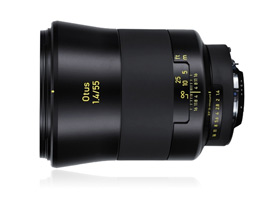


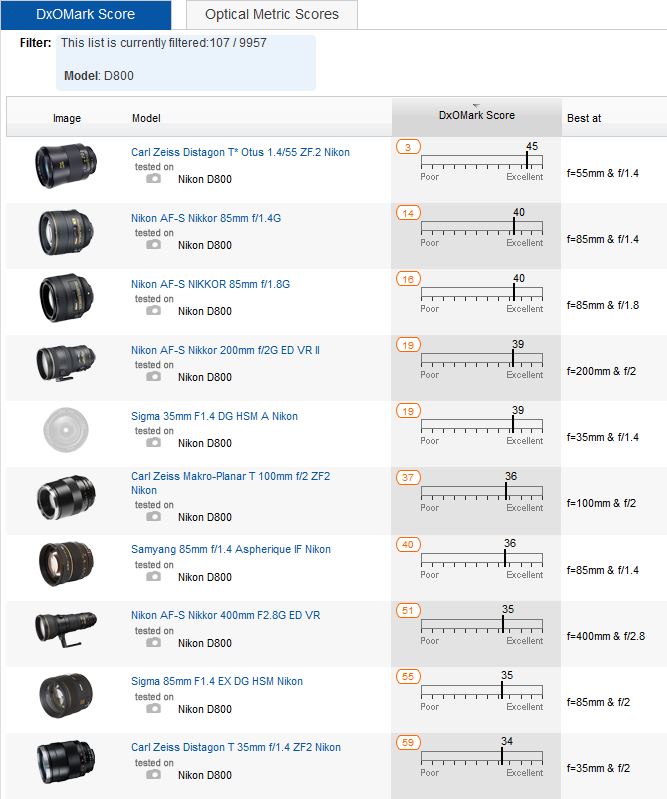
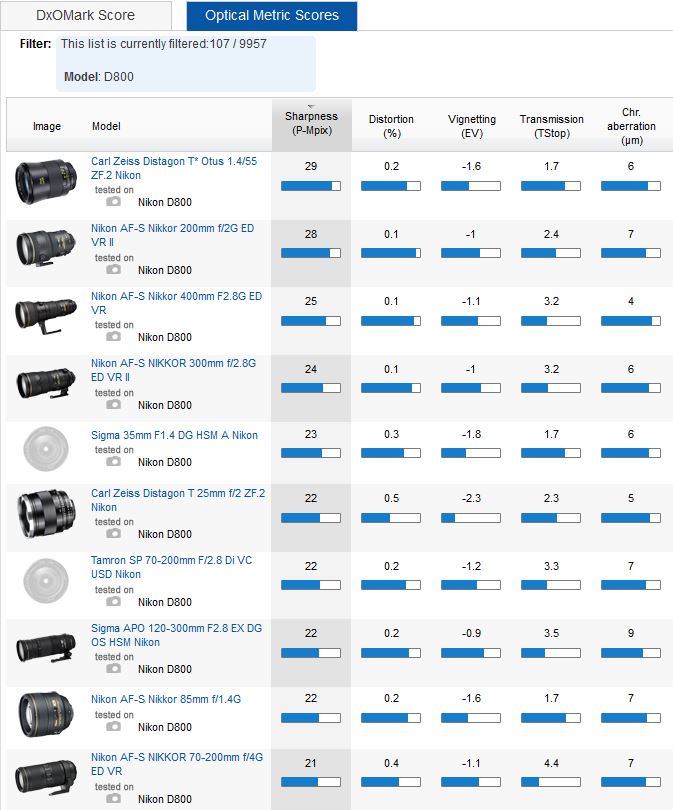

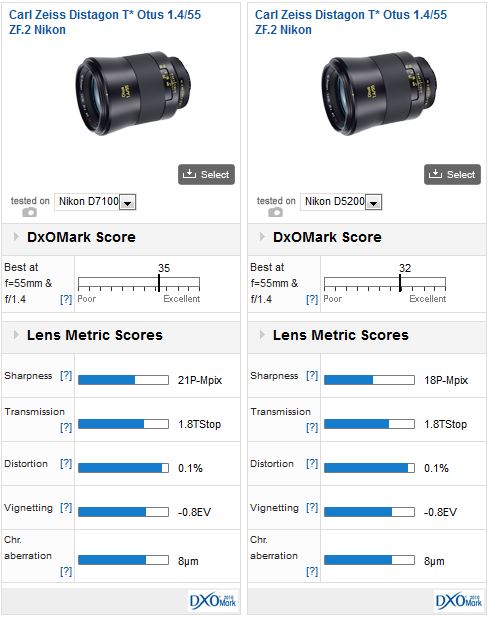
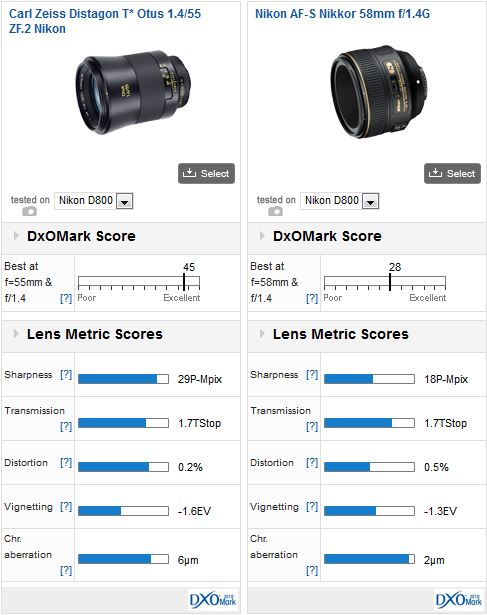
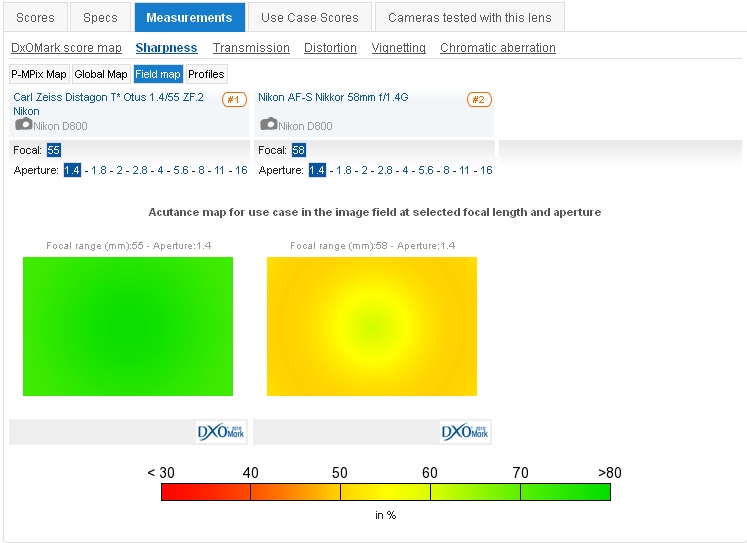
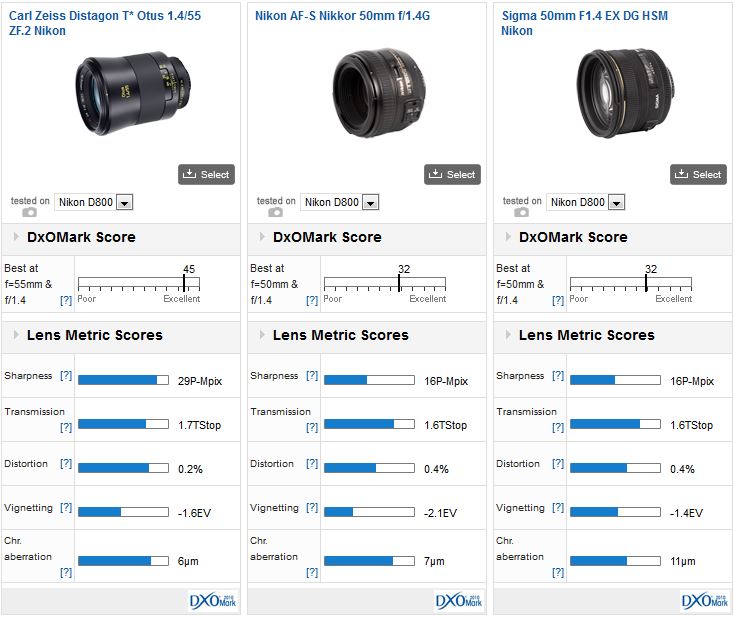
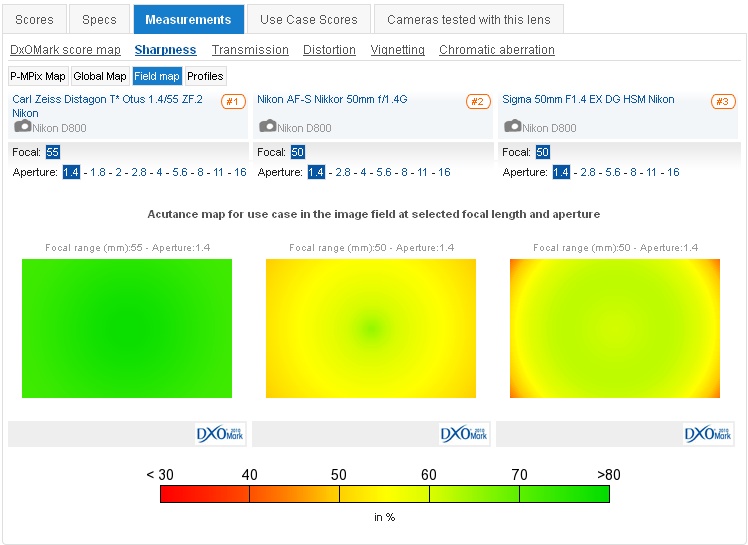

DXOMARK encourages its readers to share comments on the articles. To read or post comments, Disqus cookies are required. Change your Cookies Preferences and read more about our Comment Policy.